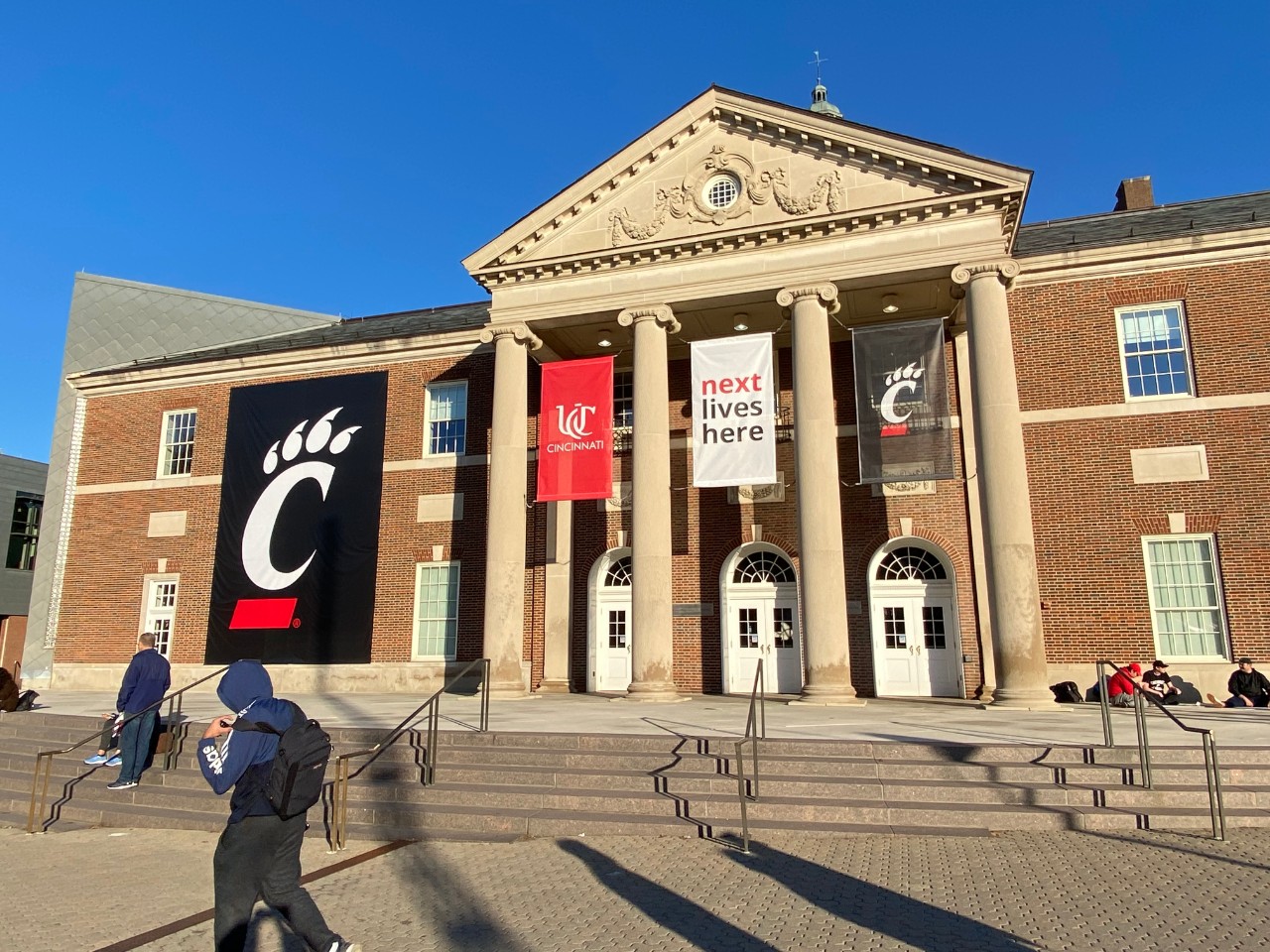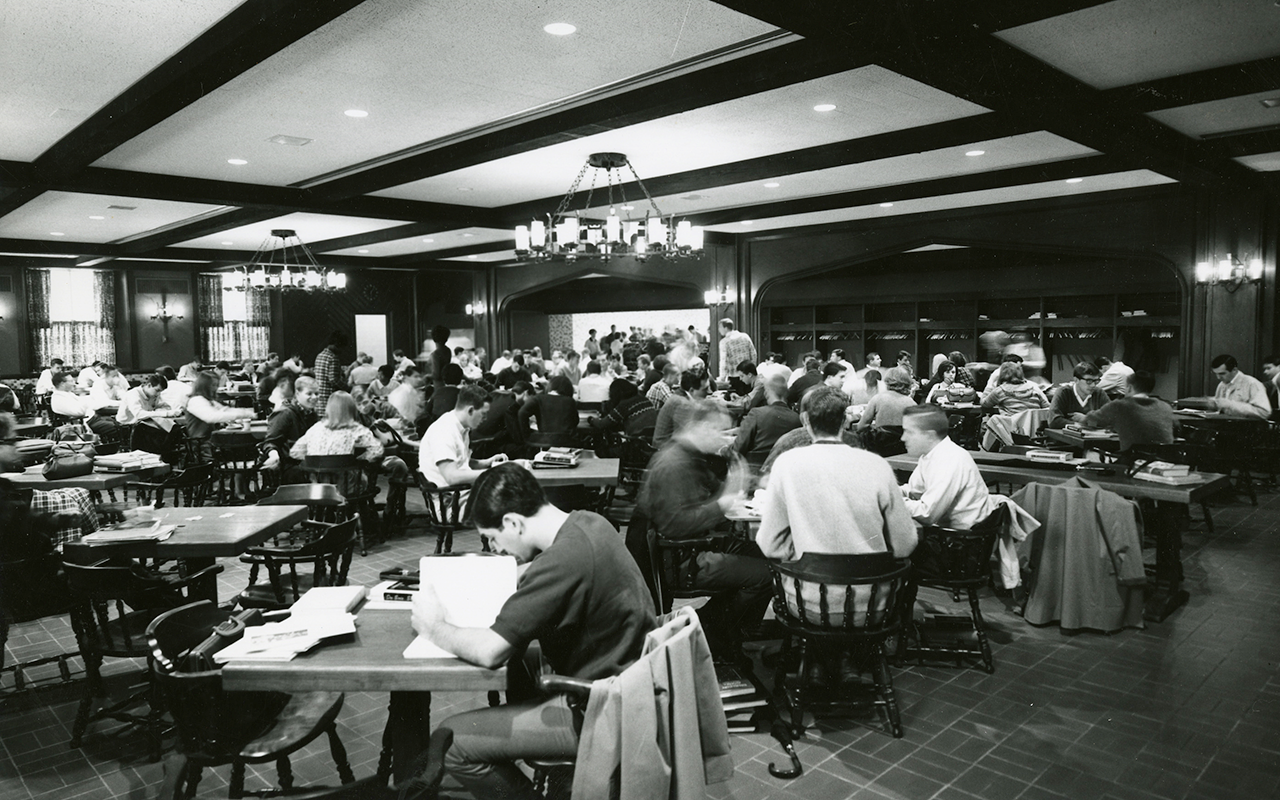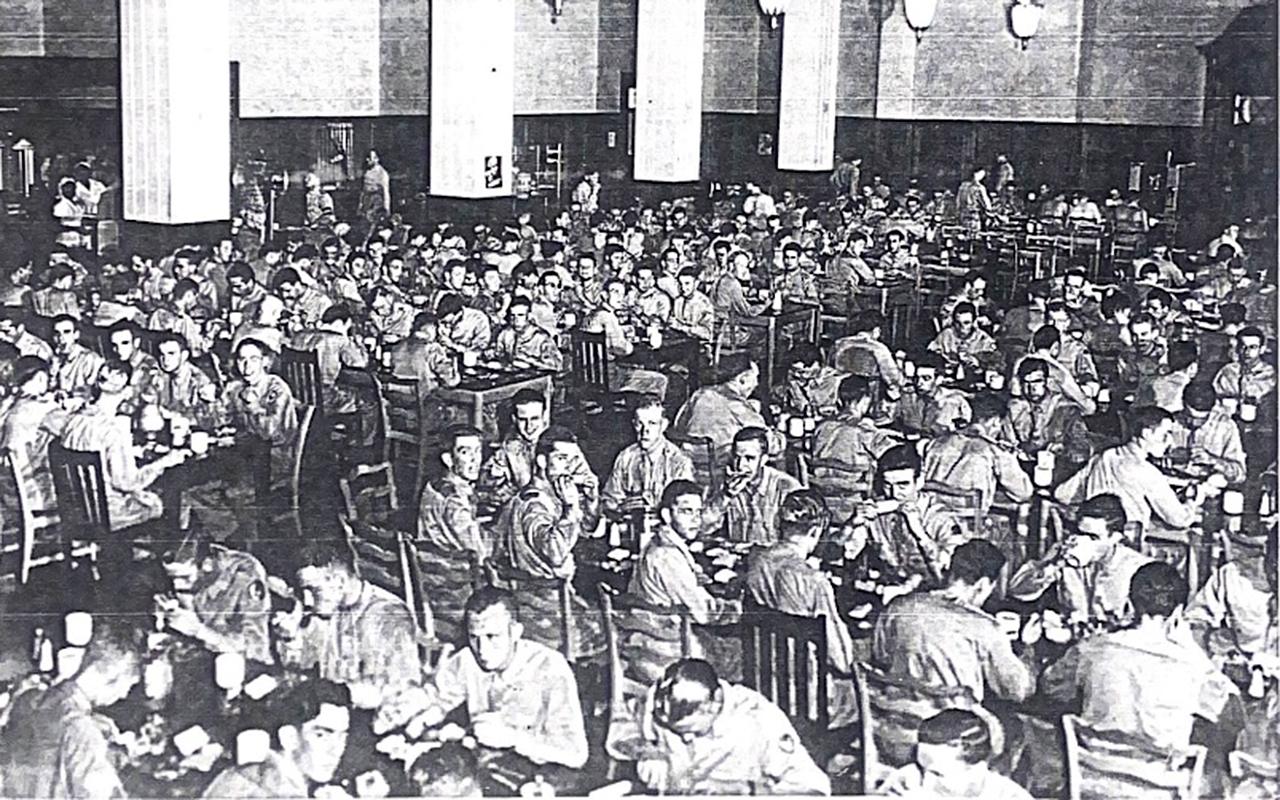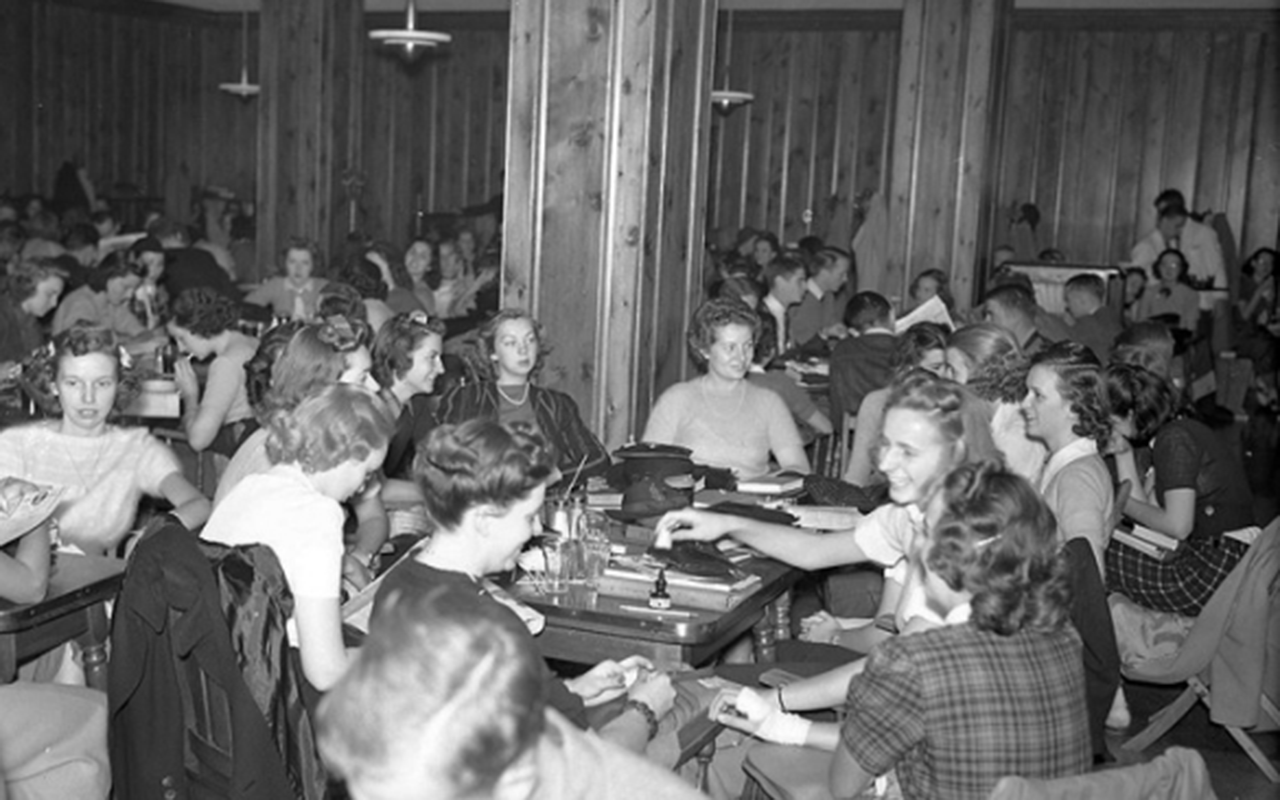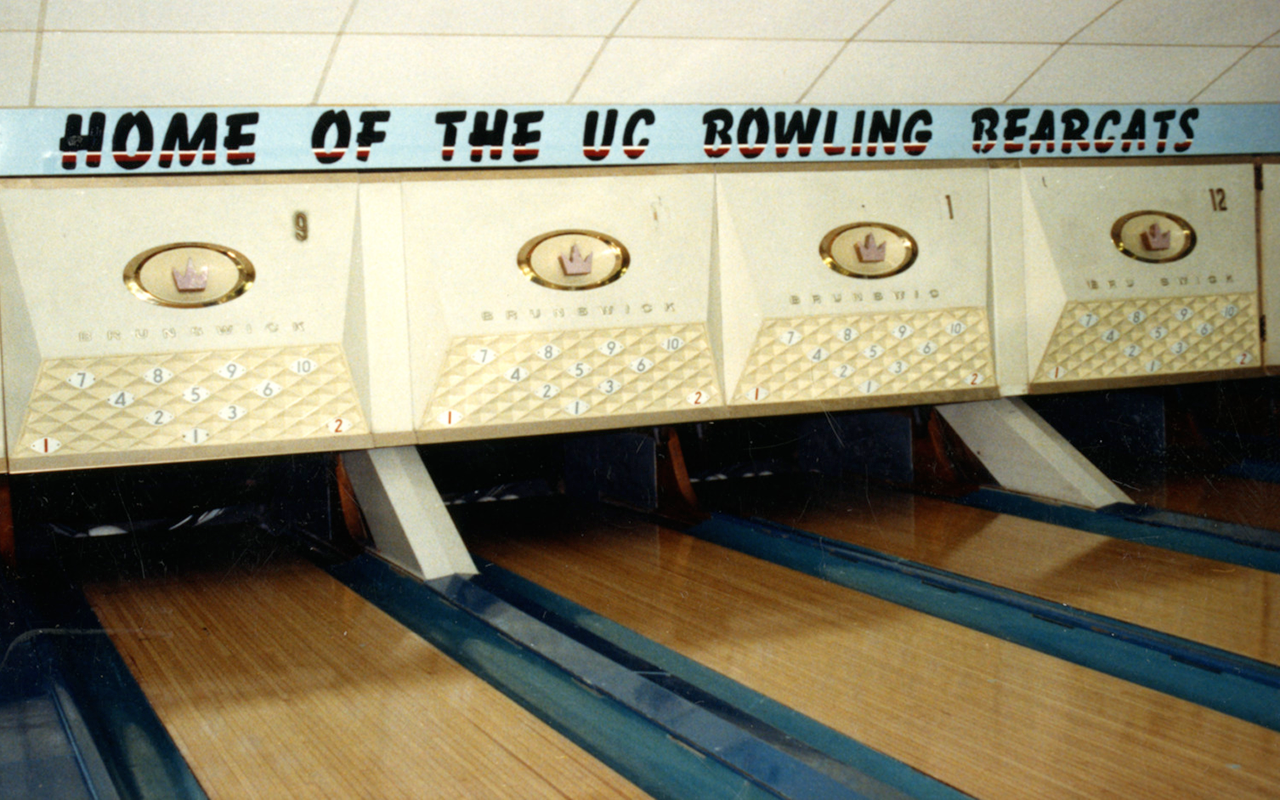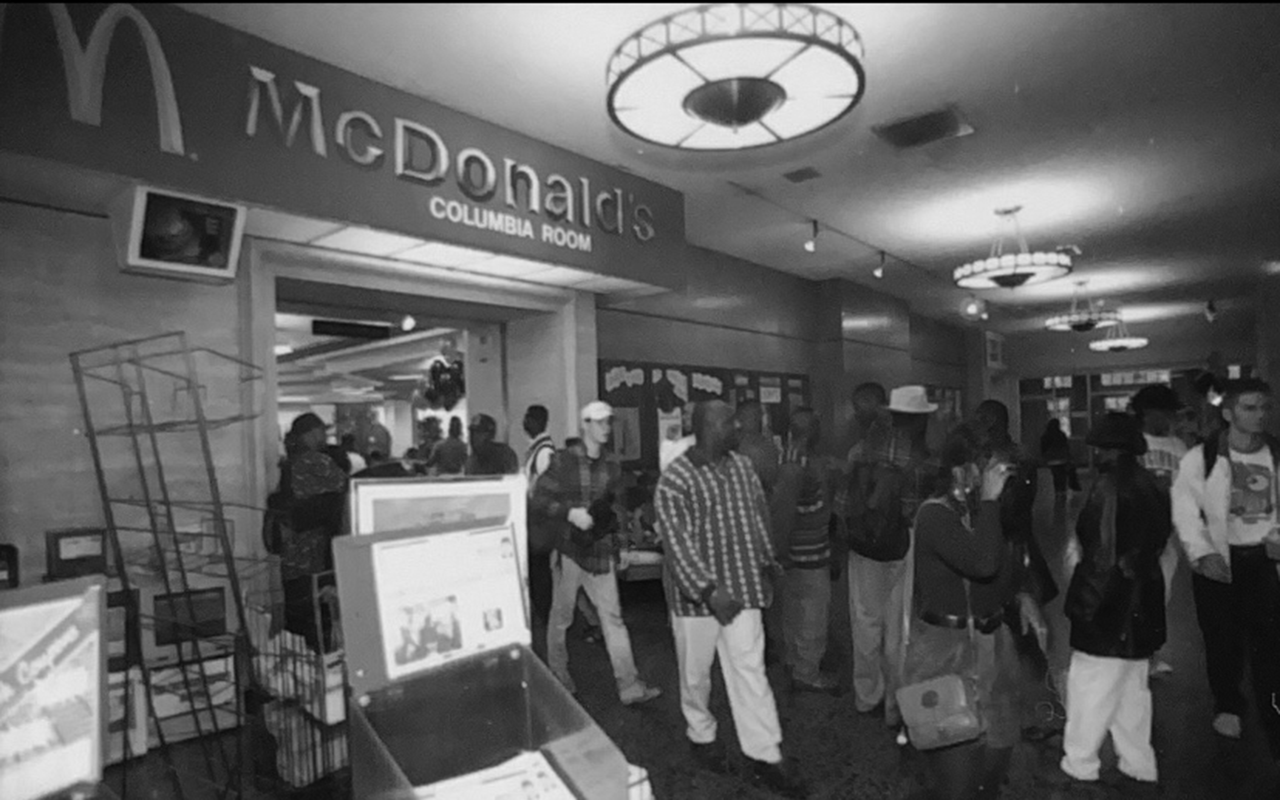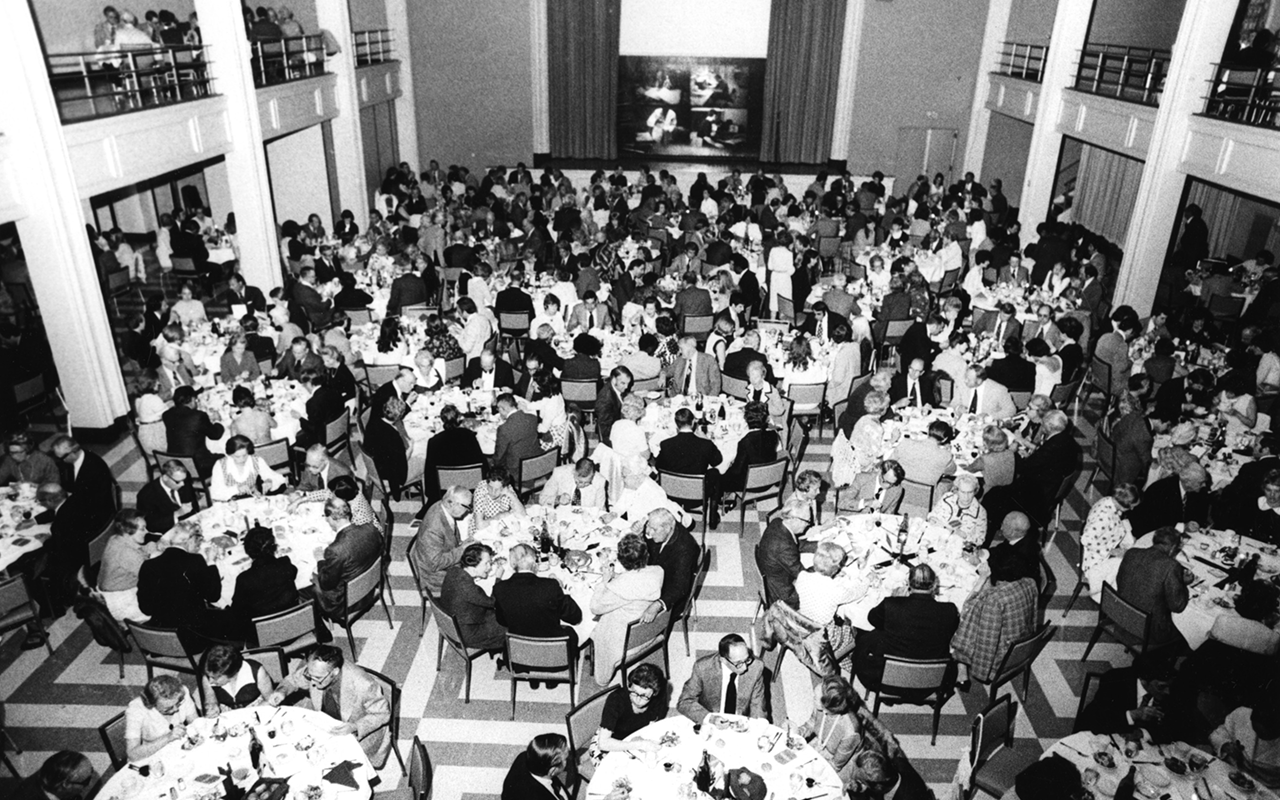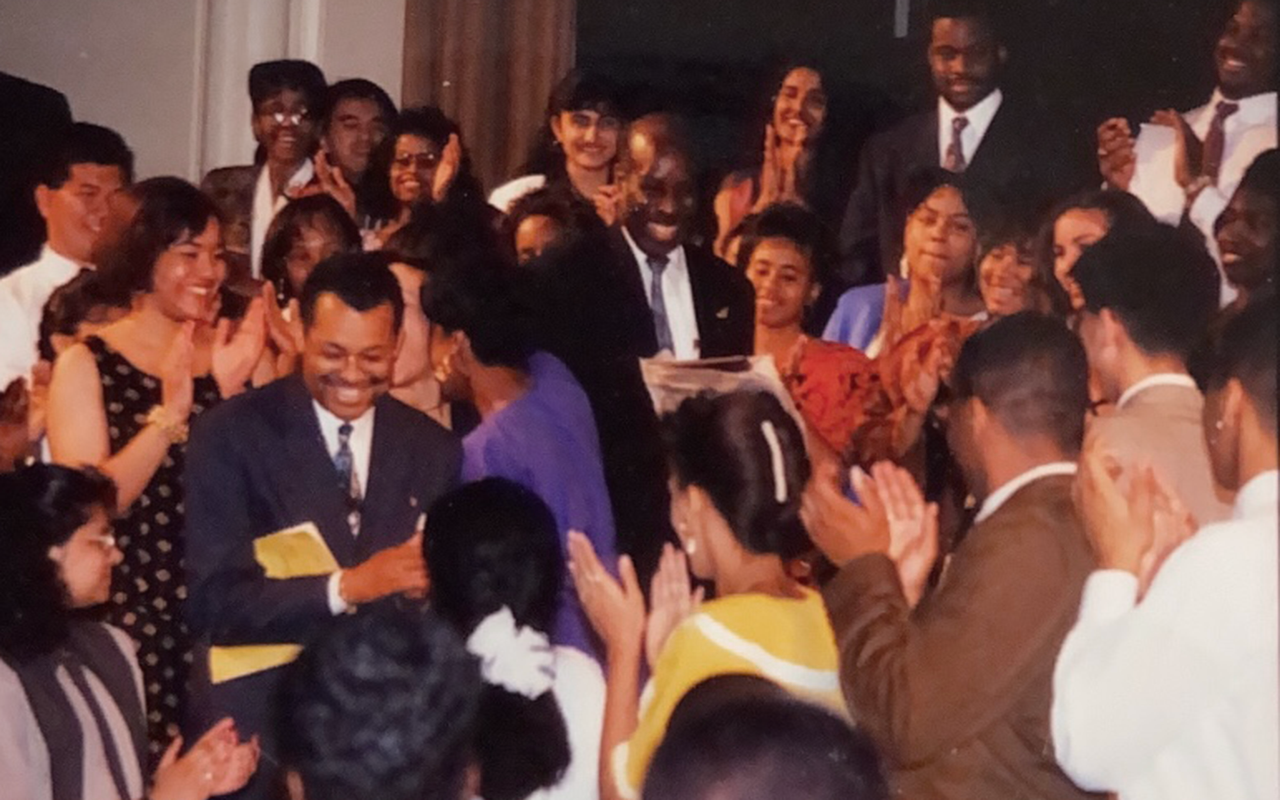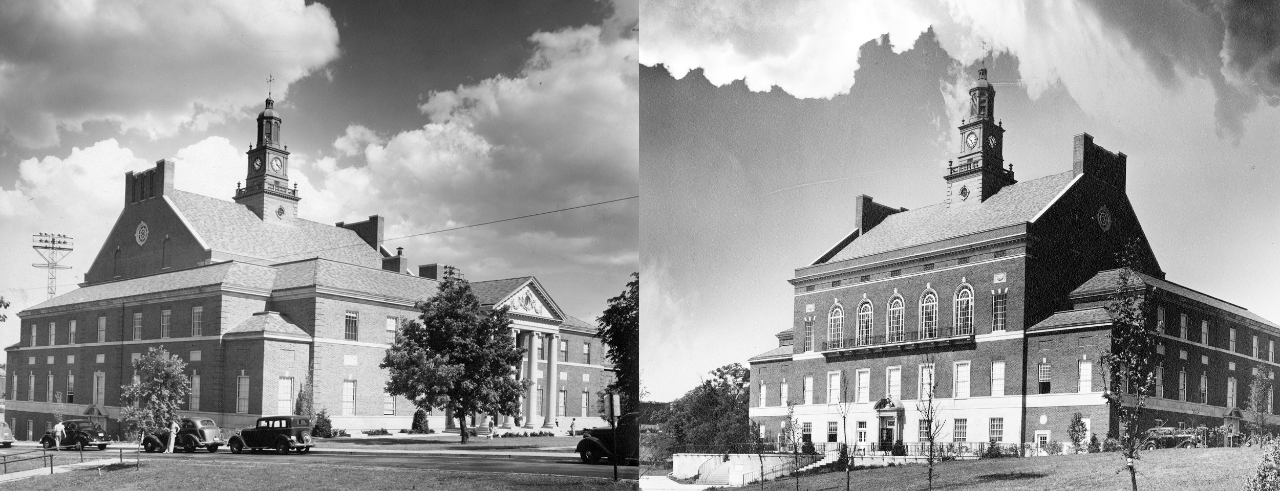
TUC History
Early Years
Originally named “The Union,” its purpose was to bring the “civilizing influences” to students and serve as a student union that could meet the needs of an ever-growing university and house student activities. The original building offered students 15 meeting rooms, a roof garden, art gallery, music lounge, and housed 40+ offices including Student Government, United Black Association, Women’s Affairs Council, and many other Student Groups and University Programs. Great Hall served as an Army mess hall when needed.
The Union Gets a Name
With UC’s growing population, “The Union” needed to be updated to continually meet the needs of students. The first renovations occurred in the 60’s with the addition of the Rhine Room (campus bar), Pic-a-Deli, Strader Dining Room, and recreational area that offered billiards, bowling, ping pong, and card tables. This $6M renovation was financed by Mr. and Mrs. Walter Tangeman. In 1967, “The Union” was dedicated to Donald Core Tangeman, young Navy sailor and son of Mr. and Mrs. Walter Tangeman who was killed in the South Pacific during WWII. Because of the contributions of Mr. and Mrs. Tangeman to the university and to honor the life of Donald Core Tangeman, the UC Board of Trustees changed the name of “The Union” to the “Donald Core Tangeman University Center,” or TUC.
An Ambitious Plan Reshapes TUC
TUC was constantly changing to address the changing needs of students at the university. By order of President at the time, Joseph Steger, the MainStreet Project was started in 1984 to create a connection between the interior and exterior elements of campus. During this time, four buildings were under construction leaving campus with a void for some time. The buildings under construction were the Center for Enrollment Services (now named University Pavilion), Tangemen University Center, Student Recreation Center (now Campus Recreation Center), and Student Life Building (now Steger Student Life Center or SSLC). Tents took the place of these centers as construction was completed. This alternative was not unusual for UC as the implementation of tents were used to bivouac soldiers in front of Baldwin Hall during WWII.
Under the leadership of President Steger, UC made strides in creating an environment where students stuck around campus for their after-school socialization with Tangeman University Center at the heart of it all. TUC closed for its most recent renovation in 2001, but it breathed new life to campus when it reopened in 2004. Maintaining around 67% of its original exterior, and adding 40,000 square feet, the new and improved Tangeman University Center was booming with life with the addition of a glass-top roof, 90-foot atrium, the UC Bookstore, movie theatre, food court, and 20 new meeting spaces for students.

TUC Stands the Test of Time
Throughout the years, Tangeman University Center has changed to meet the ever-changing needs of the increasing student population at UC. The preservation of history is instrumental to UC’s architectural goals which is why they focus on rehabilitation for their architectural projects. Just as the majority of the original exterior of the Tangeman University Center still stands, the original purpose of this student union in the heart of campus still stands to serve the next generation of students at the University of Cincinnati.
